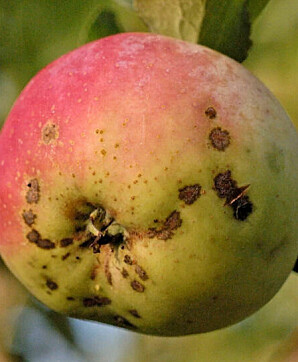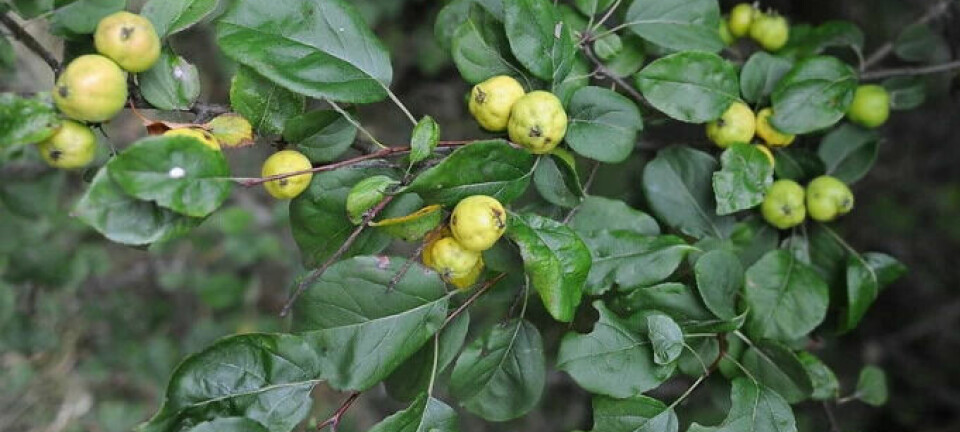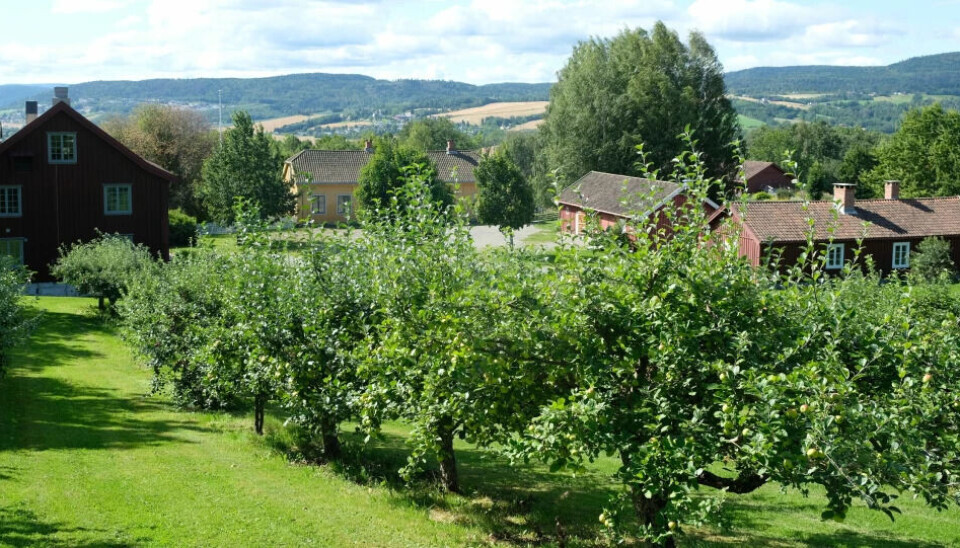
Norway has more than 400 apple varieties, but they can’t be bought in stores
The apples grown in this country come from the Netherlands and Belgium.
The Vikings ate apples. The queen buried in the Oseberg Viking ship took a bucket of apples with her to the grave. But it is not the small and sour crab apples from the Viking Age that we eat today.
Farmers started growing apples in Norway during the 18th century. They brought in different apple varieties from abroad, found out which ones worked best, and then bred new varieties.
This led to a diversity of apple varieties in this country. 417 in total. But these varieties are now about to be forgotten. No farmers currently grow them, and you can't buy them in the store.
“If we don't use the Norwegian varieties, they may disappear,” Linn Borgen Nilsen says.
Apple archives all over the country
Nilsen works with plants at the Norwegian Genetic Resource Centre at Nibio. They keep track of the genetic resources in Norwegian livestock, useful plants and forest trees.
The old apple varieties can still be found in private collections, for example in gardens associated with vicarages and museums.
“We have 27 small and large clone archives in Norway, which preserve national varieties of fruit, berries, vegetables, potatoes, herbs and ornamental plants,” Nilsen says.
The purpose is to take care of the old varieties, so that they are not lost for good.
The Norwegian varieties have received strong competition from abroad.
Cheaper varieties, modern requirements
In 2015, the government allowed the import of apple trees.
“Before that, apple farmers had to buy trees that had been produced in Norway, so the diversity of Norwegian varieties was naturally greater,” Nilsen says.
Imported trees from Belgium and the Netherlands are cheaper than the Norwegian ones. This has led to Norwegian apple varieties hardly ever being sold in stores.
When you buy apples from Hardanger, they are most likely Dutch or Belgian.
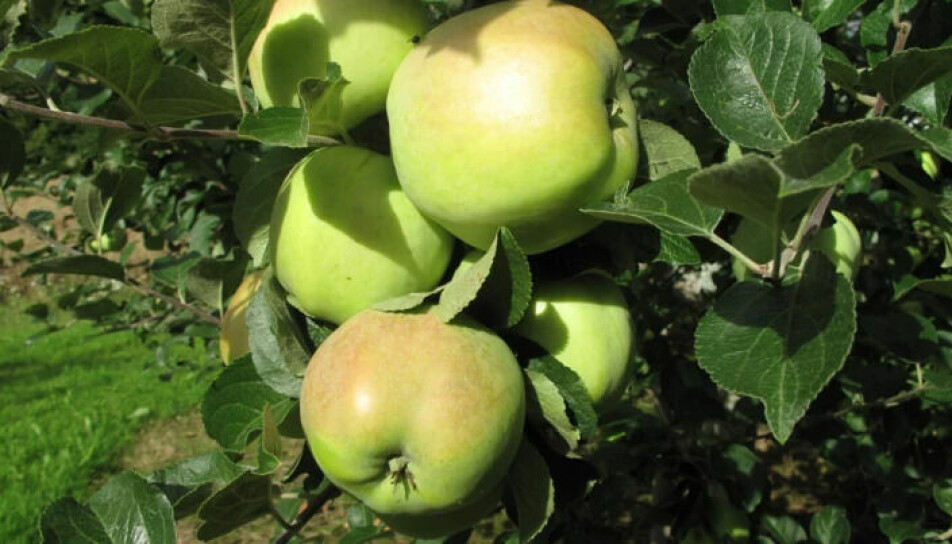
Knut Amund Surlien is a fruit farmer from Svelvik. He is also responsible for apples, pears and plums at Gartnerhallen, a Norwegian agricultural cooperative of more than a thousand fruit and vegetable producers.
He says that farmers want apples that give stable yields, store well and have a modern flavour profile.
“I doubt that we will find apple varieties that are a hundred years old that meet these requirements,” Surlien tells sciencenorway.no.
The apples must be red
Surlien confirms that 95 per cent of all apple varieties grown in this country have been bred elsewhere than in Norway. It has been like this for many years.
Breeding apple varieties takes a long time, is expensive and is filled with uncertainty, according to Surlien. New varieties must be easy to grow, be resistant to diseases, withstand shipping and storage, and not least: people must like the taste.
“In Norway, we don't have an apparatus for that, so we import from Belgium and the Netherlands, which are the largest in this field in Europe,” Surlien says.
Red apples are all the hype. They should be crispy and sour, but also sweet.
“There is little interest in yellow apples, both among those who grow them and those who buy them. Yellow apples develop spots quickly, so the redder the better. The red colour camouflages the small brown spots that come from impacts. After all, we buy with our eyes,” he says.
American, Canadian and Swedish varieties
Discovery, which is originally an English variety, is currently the most grown in Norway, followed by Canadian Summerred and Swedish Aroma. These grow on imported trees from Belgium and the Netherlands.
Red Gravensten is originally a Danish variety, but has been cultivated in Norway for 200 years and is still common, according to Surlien.
Åkerø is the only Norwegian apple variety that is grown commercially.
“But Åkerø is almost a curiosity. Not much of it is grown because Åkerø has weak crops, a short season and does not store very well,” Surlien explains.
A lot of traditional Norwegian food is back again. We forage for wild garlic and mushrooms, barbeque cabbage and serve home-cooked meals. Turnips and other forgotten vegetables are being used again.
Knut Amund Surlien does not see any such trend on the apple front.
“No one was making money from old varieties”
He says that in the 1990s, attempts were made to introduce Norwegian apple varieties to the market.
“They didn't catch on. No one was making any money from them,” he says.
But the apples that grow on European trees are still grown in Norway, which is why they are marketed as Norwegian apples, according to Surlien.
“We use too many resources on the old apple varieties. There is a low probability that they can be used in commercial apple cultivation,” he says.
Does it really matter if the old apple varieties disappear? Do we need that many varieties?
If our agriculture has a diversity of varieties, it lowers the risk, Linn Borgen Nilsen at the Gene Resources Centre says.
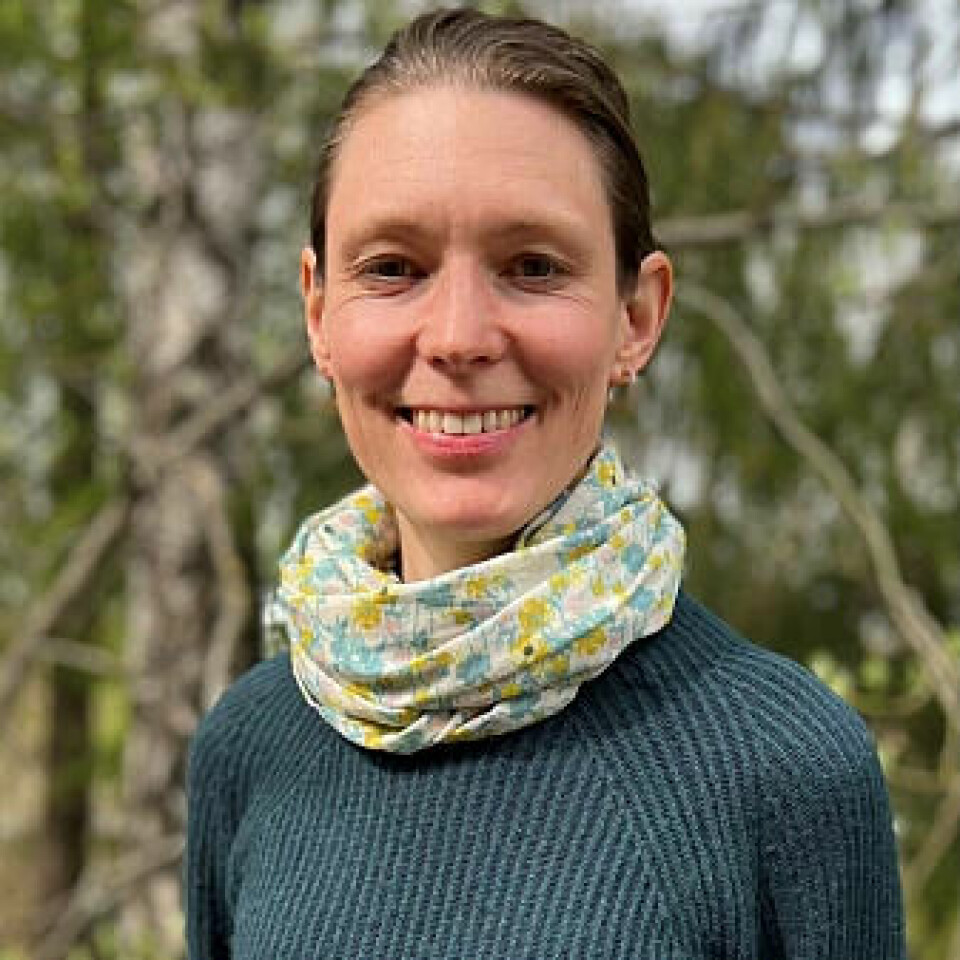
Diversity is good for the future
Farmers today mainly practice mono-agriculture, which refers to a large area with just one crop.
“It can save some costs, but it is not ecologically beneficial. A diverse agriculture attracts more bumblebees, insects and microorganisms, but is often more expensive to operate for the producers,” says Nilsen.
She also points to the national responsibility Norway has to take care of old varieties, both through international treaties and the UN Convention on Biological Diversity.
“We are internationally obliged to preserve genetic diversity, which is important for agriculture and food production. It is a shame that more arrangements are not made for Norwegian fruit producers to have the opportunity to grow Norwegian apple varieties,” Nilsen says.
She is concerned with preparedness and food safety.
Red currants grow well in Norwegian weather
Take red currants and strawberries as an example.
Red currants grow well in Norway and are part of our food traditions.
“Seen from a preparedness perspective, we may not be able to grow strawberries in Norway in 50 years, but red currants will still grow. Therefore, we must put aside the immediate consumer preferences,” Nilsen believes.
Fruit and berries that have grown in this country for hundreds of years cope well in our climate. They may also be more resistant to disease and climate change.
“It is not certain that it is necessary to take care of all the 417 apple varieties that are preserved today. Having said that, we don't quite know what kind of characteristics we need to prepare agriculture for future challenges,” Nilsen says.
Today, Norwegian apple farmers account for 15-18 per cent of sales in stores, according to Gartnerhallen. The rest of the apples we buy are imported.
Additionally, we also buy large quantities of fruit that do not grow in this country, such as mangoes, kiwis, figs and apricots.
Be prepared
“The question is whether we should use a lot of resources to introduce and grow exotic varieties in Norway, or would it make sense to invest in what we know grows well in our climate and which has great national diversity,” Nilsen says.
At the Gene Resources Centre, it is the use that is most important.
“We do not preserve the traditional varieties just to be able to report that they exist. The value of this work lies in its use. That processors get access to the material, that researchers take an interest, and that manufacturers see the potential in direct use,” she says.
“Furthermore, it is a precautionary principle. We take care of our varieties now, because we don't know what we will need in 50 years.”
———
Translated by Alette Bjordal Gjellesvik.
Read the Norwegian version of this article on forskning.no
Reference:
NIBIO: Nøkkeltall 2021 fra Norsk genressurssenter Status for bevaringsverdige husdyr, skogtrær og nytteplanter (2021 Key figures from the Norwegian Gene Resources Centre Status of conservation-worthy livestock, forest trees and useful plants), 2022.
------








